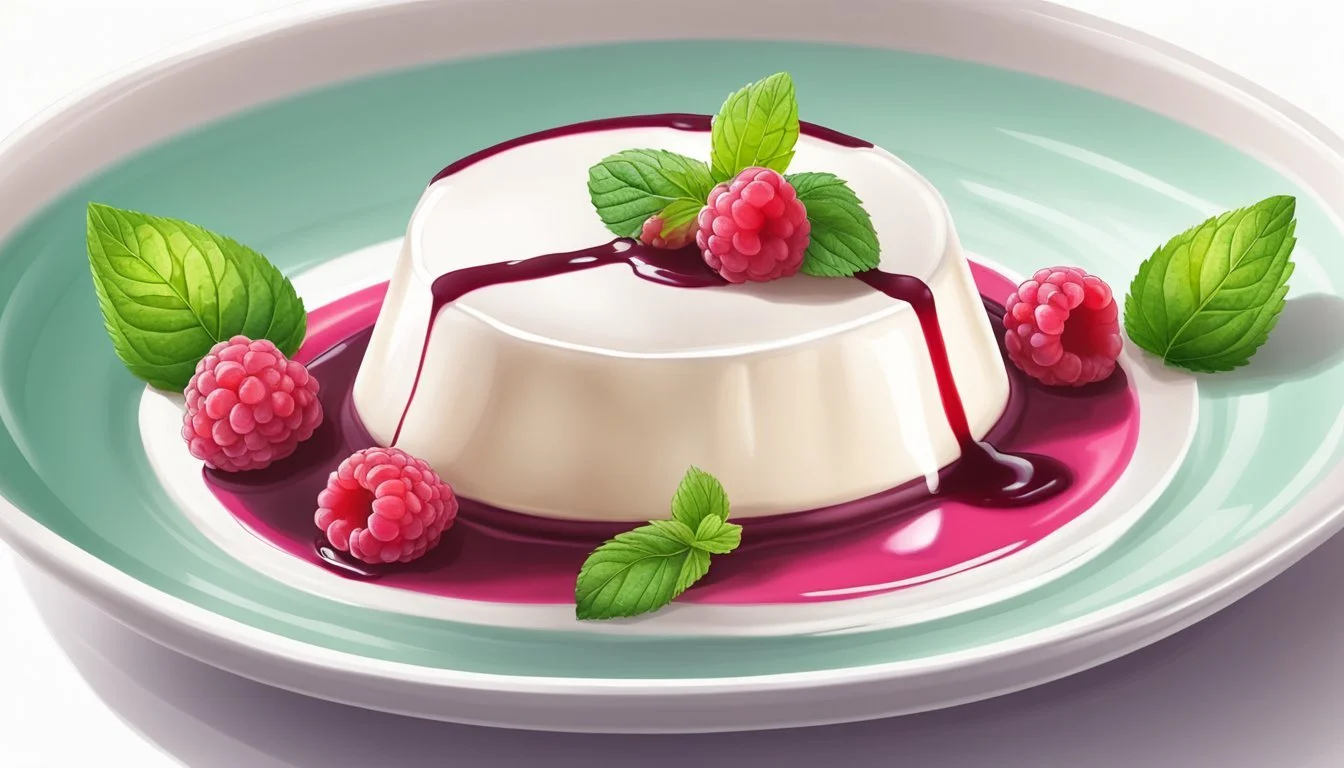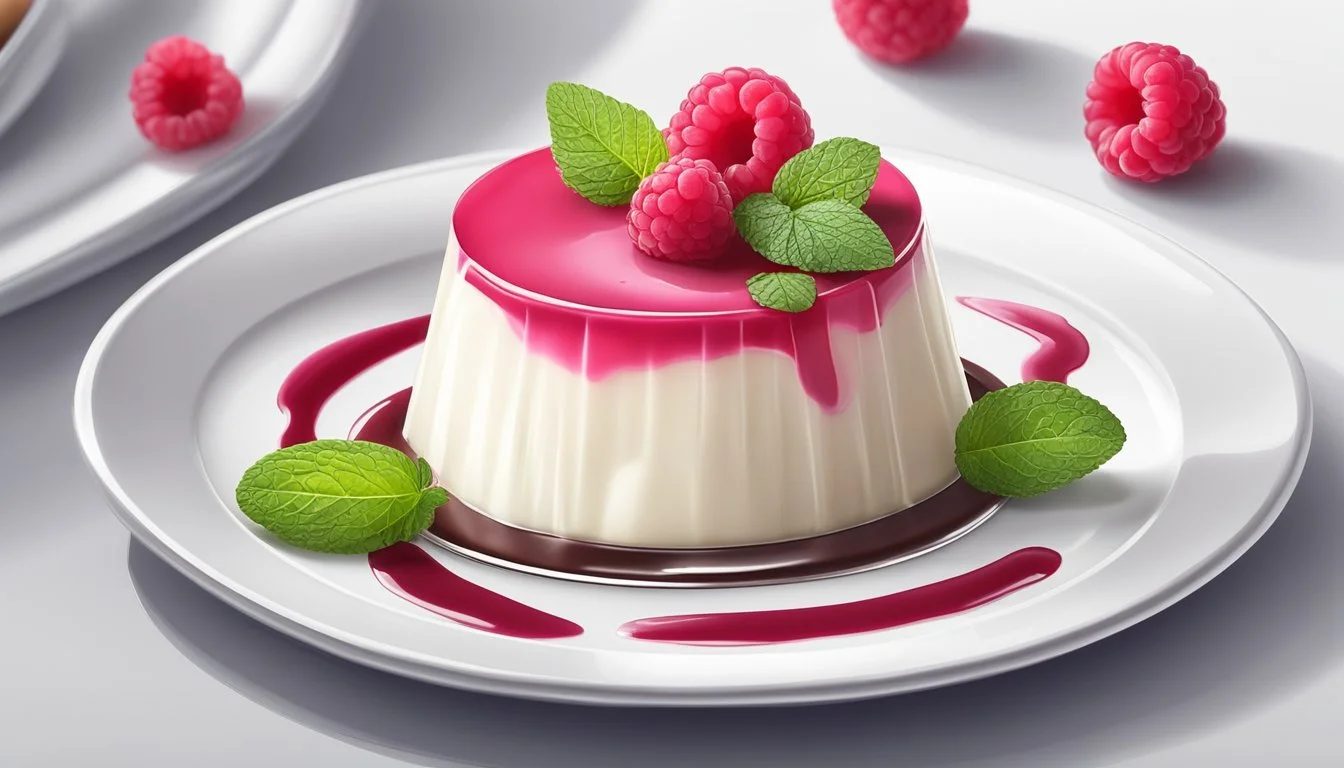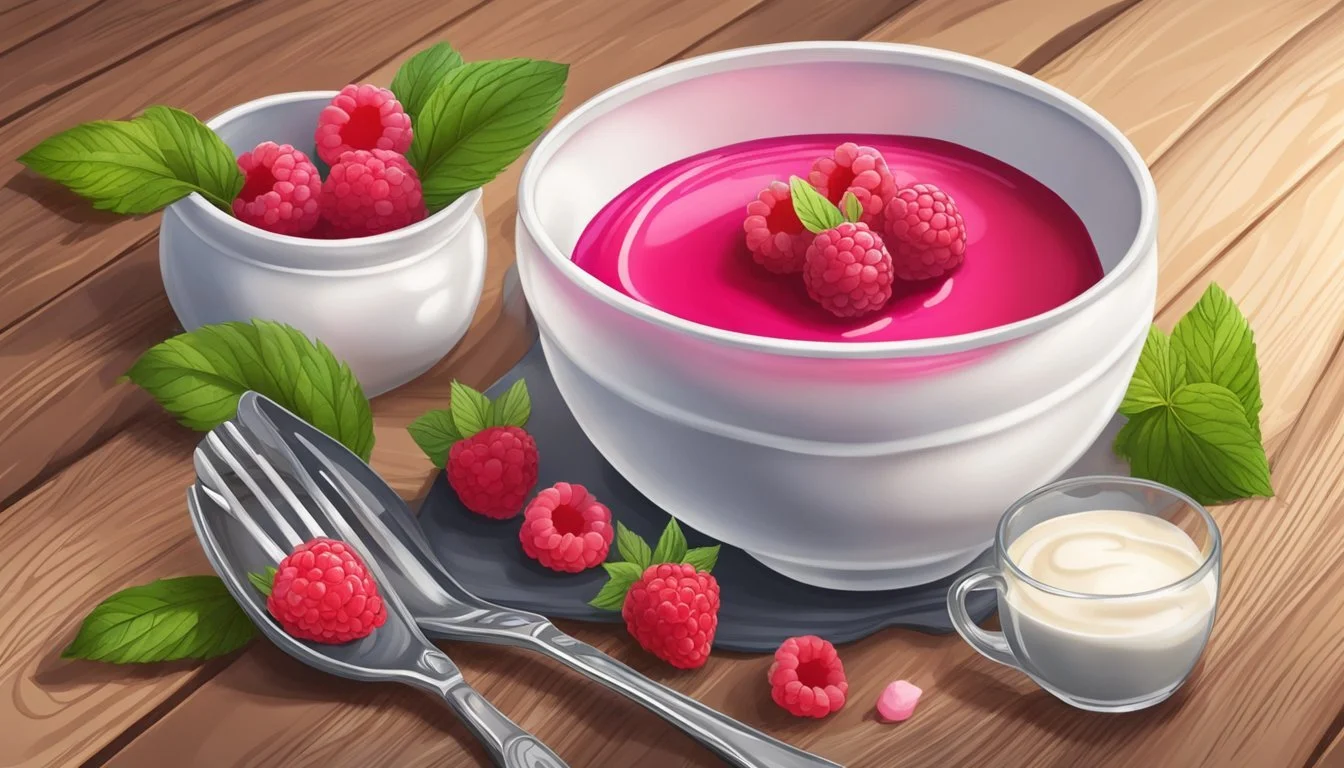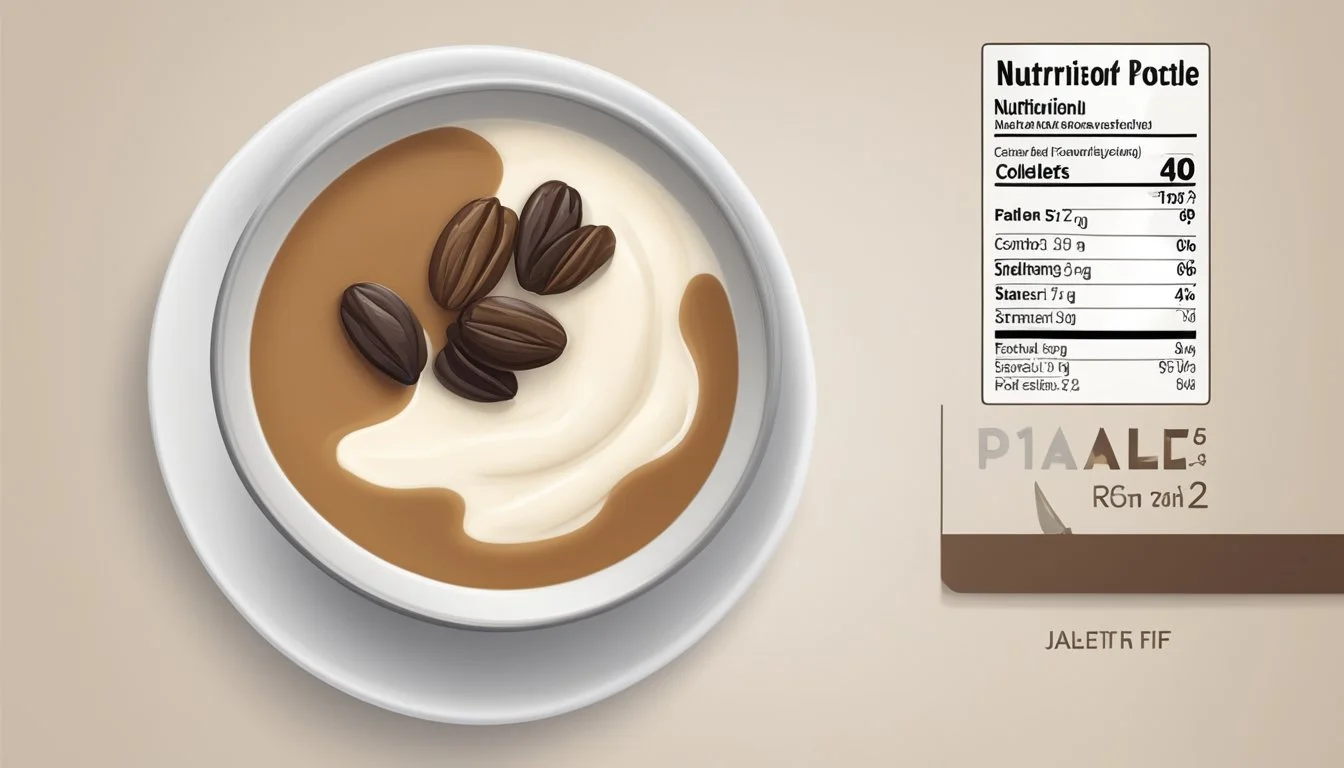How Long Does Freshly Prepared Panna Cotta Last?
Shelf Life and Storage Tips
When it comes to enjoying homemade panna cotta, the shelf life of this delicate dessert (What wine goes well with desserts?) is a common question among home cooks and dessert enthusiasts. Panna cotta is a creamy Italian dessert that literally means 'cooked cream'. It is known for its smooth texture and simple yet rich flavor profile, typically achieved by combining cream, sugar, and gelatin. To maintain the quality and taste, proper storage is essential. Freshly made panna cotta can last in the refrigerator for a couple of days if left uncovered. When properly covered, its shelf life extends to about a week.
The setting time for panna cotta, which is crucial for achieving the perfect consistency, varies slightly depending on the specific recipe. However, a general rule of thumb is to refrigerate the dessert for at least 4 hours, although leaving it to set overnight is often recommended for best results. Once set, the firmness to the touch indicates that the panna cotta is ready to be served.
Storage recommendations are clear: placing the dessert in an airtight container or covering it with plastic wrap can prevent unwanted odors and flavors from infiltrating the dessert, keeping the panna cotta fresh. Since freshness is paramount for the full enjoyment of its silky texture and flavor, it's important that panna cotta is consumed within the ideal time frame to savor its qualities at their peak.
Understanding Panna Cotta
Panna cotta, an Italian dessert of sweetened cream thickened with gelatin, has a delicate, melt-in-the-mouth texture. This section dives into its definition, essential ingredients, and the critical role gelatin plays in the dessert’s creation.
Defining Panna Cotta
Panna cotta, which translates to "cooked cream" in Italian, is a chilled dessert known for its silky texture and versatility in pairing with a variety of sauces and toppings. The dessert's origin traces back to Italy, where it is revered both for its simplicity and for its elegant presentation.
Key Ingredients
The foundational elements of panna cotta include:
Cream: The primary ingredient that gives the dessert its rich and creamy character.
Sugar: It provides sweetness, balancing the flavors.
Vanilla: Often added to enhance aroma and taste, though it's not essential for the structure of the dessert.
The Role of Gelatin in Panna Cotta
Gelatin is a critical ingredient in panna cotta, acting as a setting agent that allows the mixture to firm up into a pudding-like consistency. Derived from collagen, gelatin's interaction with the creamy base is pivotal to achieving the right texture. It generally requires several hours of refrigeration to set properly. Panna cotta's texture can range from a delicate quiver to a more substantial set, depending on the ratio of gelatin used.
Preparation Basics
In the creation of panna cotta, mastering the basics is key. Accuracy during the preparation phase ensures a sweet, creamy dessert with the ideal texture after it’s set.
Creating the Cream Mixture
One starts by combining -- heavy cream (for a rich texture) and milk (to lighten the mixture) -- in a saucepan. To this, sweet elements such as sugar are added along with flavorings like vanilla extract. This mixture is heated gently until the sugar dissolves, taking care not to let it boil to preserve a smooth texture.
Dissolving and Blooming Gelatin
Gelatin is essential for panna cotta's structure. It's typically bloomed in cold water, which means soaking the gelatin until it swells, usually for about 5 to 10 minutes. After blooming, the gelatin must be completely dissolved into the warm cream mixture. The dissolved gelatin allows the panna cotta to set properly.
Final Steps Before Chilling
Once the gelatin integrates smoothly with the cream mixture, the liquid is poured into ramekins or molds. The filled ramekins should be allowed to cool at room temperature before being moved to the refrigerator to chill. Chilling takes several hours, but upon setting, the panna cotta will hold its form when unmolded.
Serving and Presentation
Panna cotta's appeal lies not only in its creamy texture but also in its versatile presentation. A well-presented dish elevates the dining experience, whether serving it at a sophisticated dinner party or as a delightful end to a family meal.
Unmolding Panna Cotta
To unmold panna cotta, one should first run a thin knife around the edges of the ramekin to release the dessert without cutting into it. Then, a brief dip in warm water for about three seconds can loosen the bottom. Inverting the ramekin onto a serving dish and giving it a gentle shake should allow the panna cotta to slide out gracefully.
Sauce and Topping Suggestions
Toppings and sauces add both flavor and visual appeal to panna cotta. A variety of options allow one to tailor the dessert to their tastes:
Fresh Fruit: Arrange slices or whole berries like strawberries or raspberries for a refreshing contrast.
Sauces: Drizzle rich caramel, sweet strawberry, or tangy raspberry sauce to complement the dessert's flavor.
Whipped Cream: A dollop of whipped cream can be both a garnish and a creamy component that melds with the delicate panna cotta.
Storing Panna Cotta
Proper storage is essential to maintain the freshness and texture of panna cotta. Whether refrigerating or freezing, careful attention to temperature and covering can extend the dessert's shelf life while preserving its quality.
Refrigeration Guidelines
When storing panna cotta in the refrigerator, it should be covered with plastic wrap to protect it from absorbing other flavors and to prevent a skin from forming on the surface.
Refrigeration Time: 48 hours
Optimal Temperature: 4°C (39°F)
Freezing Panna Cotta
Freezing panna cotta is an option if one needs to extend its shelf life beyond a couple of days. It should be tightly sealed in an airtight container or covered with plastic wrap, then wrapped in aluminum foil for extra protection.
Thawing Process: Defrost in the refrigerator to maintain texture.
Freezing Timeframe: Up to 1 month
Shelf Life and Quality
The shelf life of panna cotta varies depending on whether it is refrigerated or frozen:
Refrigerated: Up to 2 days while maintaining optimal quality.
Frozen: Up to 1 month, but expect slight changes in texture upon thawing.
The quality of panna cotta can degrade over time, so it is recommended to enjoy it within these timeframes for the best taste and texture.
Special Variations
When crafting a panna cotta, chefs and home cooks often explore alternative ingredients and flavors to accommodate various dietary needs and personal tastes.
Non-Dairy Alternatives
For those who avoid dairy, coconut milk and nut milks like almond milk offer rich, creamy alternatives that still achieve the desired texture of traditional panna cotta. Substitutions such as these result in a dairy-free dessert that retains the classic silky-smooth consistency. To set the non-dairy panna cotta, agar agar, a vegetarian gelatin substitute derived from algae, can be used effectively.
Flavor Variations
Flavor infusions transform panna cotta from its original simplicity into an exciting dessert with endless possibilities. For instance, coffee panna cotta provides a bold and aromatic twist, while buttermilk panna cotta introduces a subtle tanginess. Incorporating pureed fruits, chocolate, or spices into the mixture before it sets can cater to diverse palates.
Dietary Adjustments
Creating a panna cotta that suits specific dietary restrictions does not necessitate a sacrifice in flavor or texture. Those on a vegan diet can enjoy a completely plant-based version using alternatives like almond milk and setting agents like agar agar, ensuring the dessert remains vegan and vegetarian-friendly while still being indulgent.
Troubleshooting Common Issues
When preparing panna cotta, one may face certain challenges that affect the dessert's final texture and presentation. This section addresses common issues and their respective solutions.
Handling Lumps and Inconsistencies
To prevent lumps in panna cotta, ensure that the gelatin is properly bloomed before incorporating it into the mixture. Blooming involves sprinkling gelatin over a cold liquid, usually water, and letting it sit for a few minutes. It should look like soft granules and have a spongy consistency. If lumps do appear during the mixing process, one can strain the mixture through a fine sieve to achieve a smoother consistency.
Issues When Unmolding
Unmolding panna cotta can be tricky, and it's not uncommon to encounter problems where it doesn't release smoothly from the mold. For a clean release, run a thin knife around the edge without inserting it deeply, just to detach the dessert from the sides. Briefly dipping the mold in warm water for about 3 seconds can also help. This melts the outer layer slightly, allowing the panna cotta to release without sticking.
Texture Problems After Storage
The texture of panna cotta should remain consistent even after storage. However, if one notices that the dessert is too soft or not setting properly, it could be due to insufficient gelatin or melting during the storage process. Conversely, a rubbery texture suggests too much gelatin was used. Store covered in the refrigerator to maintain the right texture, and always give panna cotta enough time to set, ideally for at least four hours or overnight.
Cooking Tips and Tricks
In creating the perfect panna cotta, attention to detail is key. Understanding how to enhance creaminess, perfect the set and wobble, and master gelatin techniques will elevate the texture and consistency of the dessert.
Enhancing Creaminess
For a luxurious, creamy texture, it's essential to use high-quality cream with a high fat content. Whole milk and fresh cream are preferable for richness. When heating the cream, one can add a spoonful of vanilla bean paste for an aromatic depth that underscores the creaminess.
Perfecting the Set and Wobble
Achieving the iconic quiver of panna cotta without it being too firm or too liquid comes down to precision:
Powdered gelatin should be evenly distributed over the surface of the milk to "bloom" properly.
The ratio of gelatin to liquid is vital. Use about 1 teaspoon (3g) of powdered gelatin or 1 sheet of sheet gelatin per cup (240ml) of liquid for the ideal wobble.
Advanced Gelatin Techniques
To master gelatin:
Always sprinkle the powdered gelatin evenly to avoid lumps.
For sheet gelatin, soak in cold water until it's softened before squeezing out excess water and dissolving it in warm liquid.
Gradually mix the softened gelatin into the warm cream mixture to ensure even distribution and a smooth finish.
By adhering to these targeted techniques, chefs can produce panna cotta with a consistent refined quality and appeal.
Recipe and Preparation Ideas
This section provides a detailed classic panna cotta recipe, inventive ways to present this elegant dessert, and practical advice for making it ahead of time, ensuring stress-free preparation for any occasion.
Classic Panna Cotta Recipe
Panna Cotta is a classic Italian dessert known for its creamy texture and versatility. For a basic Vanilla Panna Cotta, one will need the following ingredients:
1 cup whole milk
2 ¼ teaspoons of unflavored gelatin
3 cups heavy cream
½ cup sugar
2 teaspoons of pure vanilla extract
Prep time is about 10 minutes and total time before serving should be at least 4 hours, considering the setting time in the fridge. In a saucepan, sprinkle gelatin over milk and let stand to bloom. Then gently heat the mixture, dissolving the gelatin without boiling. Stir in cream, sugar, and vanilla until well combined and the sugar is dissolved. Pour the mixture into glasses or molds and refrigerate until set.
Creative Serving Ideas
The beauty of panna cotta lies in its simplicity and elegance, making it perfect for special occasions. One can serve this delightful dessert in glasses, laying the foundation for numerous topping variations such as:
Fresh berries or berry compote
Caramel sauce
Shaved chocolate or cocoa
Serving panna cotta in glasses, besides being visually appealing, allows for creative layering with fruit coulis or compotes.
Make-Ahead Tips
Panna cotta is the ideal make-ahead dessert for those who want to prepare something special in advance. Here's how to manage preparation time:
Portion: Depending on the occasion, portion the dessert into individual servings or a single large mold.
Setting time: After combining the bloomed gelatin mixture and other ingredients, panna cotta needs at least 4 to 6 hours in the refrigerator to set properly.
Sweetener alternative: For a twist, one can substitute sugar with maple syrup or honey, keeping in mind to adjust quantities to taste.
By following these make-ahead tips, one can ensure the Italian panna cotta is ready to impress guests with minimal effort on the day of serving.
Nutritional Information
Panna Cotta, a creamy dessert, often includes ingredients such as heavy cream, sugar, and milk which contribute to its rich flavor and texture. Understanding the nutritional content is key for those managing dietary intake or with specific dietary needs.
Caloric Content and Serving Sizes
Heavy cream and sugar, the main components in Panna Cotta, are calorie-dense ingredients. Typically, one serving of Panna Cotta can range from approximately 300 to 450 calories, with variations depending on the specific recipe and serving size. A standard portion may include:
Heavy Cream: A primary ingredient noted for its high-fat content.
Granulated Sugar: Responsible for sweetness; also a significant source of calories.
Whole Milk or Half and Half: Sometimes used in the cream mixture to balance the fat content.
Quantifying these ingredients and their respective caloric contributions provides transparency for those tracking their caloric intake.
Substitutions for Dietary Needs
For those with dietary restrictions or preferences, substitutions can be made without significantly altering the dessert's flavor profile.
Reduced-Fat Cream: Can replace heavy cream to lower the calorie and fat content.
Coconut Milk: A non-dairy alternative that also contributes a unique flavor.
Sugar Substitutes: Such as stevia or monk fruit, can be used instead of granulated sugar to reduce caloric intake.
Salt, often a minor ingredient in Panna Cotta, can usually be modified or omitted based on dietary needs without notable impact on the nutritional profile. Each substitute can affect the nutritional content, so individuals should consult specific substitution ratios and nutritional facts.










